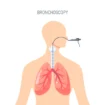view
Unlocking the power of bronchoscopy involves mastering various aspects of the procedure and understanding its potential applications. Here are ten secrets to help you harness the full potential of bronchoscopy:
- Comprehensive Training: Adequate training is essential for bronchoscopists to confidently perform the procedure. This includes both theoretical knowledge and practical hands-on experience under supervision.
- Skill Refinement: Regular practice and ongoing skill refinement are crucial for bronchoscopists to maintain proficiency and ensure patient safety.
- Advanced Imaging Techniques: Familiarize yourself with advanced imaging techniques such as narrow-band imaging (NBI), autofluorescence bronchoscopy (AFB), and endobronchial ultrasound (EBUS) to enhance visualization and diagnostic accuracy.
- Sampling Techniques: Master various sampling techniques including bronchoalveolar lavage (BAL), transbronchial biopsy (TBB), and endobronchial biopsy (EBB) to obtain high-quality specimens for accurate diagnosis.
- Therapeutic Interventions: Understand the therapeutic interventions that can be performed via bronchoscopy, such as bronchial thermoplasty, endobronchial stent placement, and tumor debulking, to effectively manage a wide range of pulmonary conditions.
- Navigational Skills: Develop navigational skills for precise localization of lesions, especially with the use of technologies like electromagnetic navigation bronchoscopy (ENB) or virtual bronchoscopy, aiding in accurate diagnosis and targeted biopsy.
- Multidisciplinary Collaboration: Foster collaboration with other specialists such as pulmonologists, thoracic surgeons, and oncologists to ensure comprehensive patient care and optimal treatment planning.
- Adherence to Guidelines: Stay updated with current guidelines and best practices for bronchoscopy, including indications, contraindications, and procedural protocols, to ensure adherence to standard protocols and optimize patient outcomes.
- Complication Management: Be prepared to manage potential complications associated with bronchoscopy, such as bleeding, pneumothorax, and respiratory distress, through prompt recognition and appropriate intervention.
- Continuous Learning: Engage in continuous learning through participation in conferences, workshops, and case discussions, as well as staying abreast of the latest advancements in bronchoscopy procedure and treatments.




